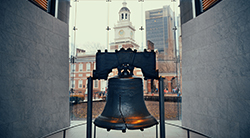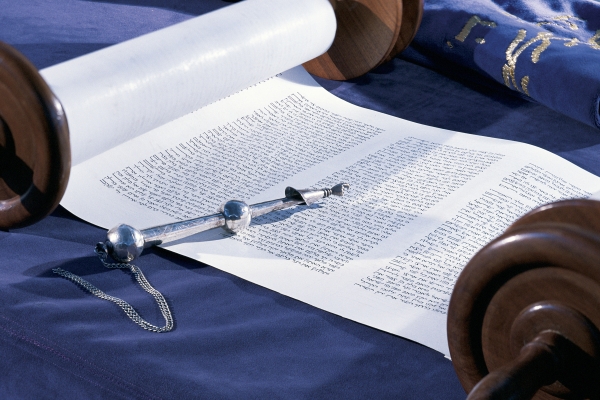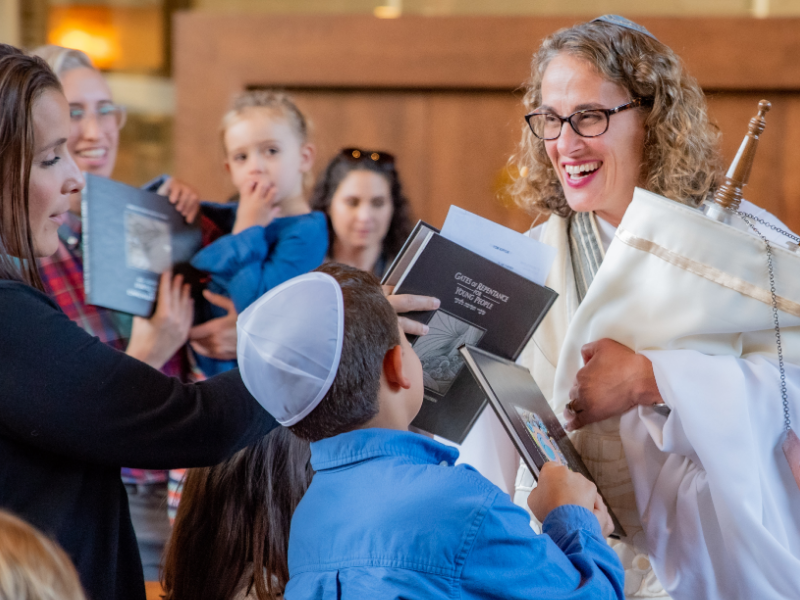
The Liberty Bell holds special fascination for American Jews, especially those of us who live in Philadelphia. For years, we lived happily with the knowledge that the Liberty Bell had been cast in England and brought to America in 1752 on a ship called the Myrtilla owned by two local Jewish shippers, Nathan Levy (the founder of the Philadelphia Jewish community) and David Franks (later one of the city’s leading Tories during the American Revolution). For better or worse, recent scholarship has changed all that and we now know conclusively that the bell was aboard a different boat, the Hibernia, captained by William Child but of unknown ownership. Moreover, the Hibernia’s docking was recorded on September 1 and the Myrtilla did not drop anchor until the end of the month.
Although the bell did not pass through Jewish hands on its trip to America, there are still enough Jewish connections to it for us to retain a special pride in one of America’s oldest political symbols. While usually not depicted as a Jewish symbol, there is a stained glass image of the Liberty Bell in the memorial chapel of my synagogue depicted along with Independence Hall, Haym Solomon, and Robert Morris, Superintendent of Finance of the United States during the Revolution. It is also interesting to note that a small replica of the Liberty Bell is on display in Jerusalem’s Gan Pa’amon HaDror (Liberty Bell) Park. In addition to local pride, there are a number of solid Jewish reasons to include the Liberty Bell in one of our main worship spaces and in a public park in modern Jerusalem.
First, the verse inscribed on the Liberty Bell is from this week’s double portion, B’har/B’chukotai:
Proclaim LIBERTY Throughout all the Land unto all the Inhabitants Thereof (Leviticus 25:10).
I have long maintained that the fact that the verse is from the Torah, and not the New Testament or Greco-Roman literature, adds spiritual accessibility to the bell’s symbolic value for many American Jews. Second, the verse is part of a larger discussion about the biblical Jubilee, itself “proclaimed” on Yom Kippur on the 50th year of the jubilee cycle with the blast of the ram’s horn. Third, the verse was chosen by Isaac Norris, Jr. (1701-1766), a Quaker Hebraist who owned the largest collection of Hebrew books in the colonies. Remarkably, Norris taught his children, boys and girls, to read Hebrew, a highly unusual practice. What is unclear, however, is whether or not the commissioning of the bell was directly tied to the jubilee of Penn’s charter of 1701, also known as the Charter of Privileges. An important document in America’s colonial history, the charter built upon the original Frame of 1682 and extended liberty of conscience to all those who believed in one God, an expansion of religious rights beyond what was first offered19 years earlier.
The decision to engrave the word, liberty, in large capital letters is not without significance. In the original Hebrew, the term for “liberty” is d’ror, which specifically means to manumit slaves or indentured servants on the 50th year and, secondarily, refers to the release of land mortgages on the Jubilee. The 18th century Anglo-American context of the word, liberty, clearly imbued the inscription with aspirational political meaning and allowed the bell to become a symbol of the American Revolution. On the other hand, the more precise meaning of d’ror helped connect the bell to the later American Abolitionist movement. On both these accounts and more, American Jews (at least since the Civil War), can take great pride in the Liberty Bell and how it ties our Jewish and American traditions together in profoundly inspiring ways.
American ideas about freedom and liberty have profoundly impacted the way Judaism is practiced in the United States and other democracies. For example, many Jewish holidays in the United States have become as much expressions of our belief in liberty as they are expressions of Jewish values. Both Hanukkah and Passover, our two most widely observed home-based festivals, have become “freedom holidays” more than celebrations of miracles or divine redemption. The Maccabees have become righteous Minuteman fighting for freedom of religion. Internecine conflict, political squabbles over the control of the Temple, even the debate over assimilation into Hellenistic culture have all been glossed over, and the miracle of the oil and its unlikely supernaturalism is viewed as a symbol of uncoerced faith burning in the temple of freedom.
The Americanistic rewriting of Passover is even more dramatic. In the Torah, the Passover story is mostly about the God of Israel battling the Pharaoh to gain the affection and support of the Hebrews. Everything is done to win the hearts of a stiff-necked people who barely seem worthy of the divine attention given to them. Ultimately, both Pharaoh and nature itself are upended, the people go free, they celebrate for a moment, and then they go back to their interminable whining! We are taught to remember what “God did for us” and to remain true to a vision of future, greater divine redemptions. Instead, we have created a memorable family night, fun activities for young children, some very good songs, and a challenging seasonal culinary tradition. The deep message for most of us is probably not “God is our Redeemer” but that “freedom is good” and “to proclaim it throughout the land.”
Digging down still deeper, I would argue that for many American Jews “freedom from religion,” not “freedom of religion” is the most important aspect of separation of church and state in the United States. In America’s constitutional system we are guaranteed both the disestablishment of religion and the right to free exercise. In short, that means the United States does not have an official state religion nor should the political state interfere in the personal practice of one’s religion. However, neither proposition is straightforward and very often how they translate into actual practice is contingent on the last ruling of the Supreme Court on either principle. Today, we even have inverted situations in which conservative religious interests argue that LGBTQ laws of inclusion actually violate their constitutional right to free exercise. On the other hand, we also have seen cases determining that the display of large hanukkiyot in public spaces does not constitute an establishment of religion but is merely a cultural activity.
In the midst of this increasingly complex storm of church-state litigation is a widely held view among American Jews that religion in the United States is wholly a personal and voluntary activity, that is so to speak, free from religion. In this scenario, Judaism becomes the religion they are at liberty not to practice, a position maintained by the majority of American Jews at least with respect to synagogue affiliation. From this perspective, the inscription on the Liberty Bell functionally means “in America, I am free to not practice any religion at all as a right and by law.” In many ways, that freedom is American Judaism’s greatest blessing and most daunting challenge.
The question of religious liberty is even more complicated in Israel than it is in the United States, especially for Reform Judaism. Although Israel’s Declaration of Independence speaks of democracy and freedom in lofty terms, the Jewish State does not have a proper constitution. A consequence of not having a constitution is that the relations between government and the institutions of religion in Israel are defined in terms of political expediency and not the rule of law. As a minority community, Israeli Reform Judaism has been placed at a terrible disadvantage by the de facto established Orthodox community. Ironically, Israeli Reform Judaism is also compelled to gain access to establishment benefits and not fight for an American style separationism. In Israel, the mandate to "proclaim (religious) liberty throughout all the Land” is muted twice.
The inscription on the Liberty Bell sourced from Leviticus 25:10, “Proclaim liberty throughout all the land unto all the inhabitants thereof,” is one of the most powerful, challenging, and important Torah teachings in our time. For American Jews, it defines the essence of our relationship with both our country and our religious heritage. For Israeli Reform Jews, it is an aspirational goal that gives us hope and renewed strength for the ongoing fight against the Orthodox “establishment.” Embracing, celebrating, and working with the many challenges of liberty is the essence of what it means to be a modern Jew today in America, Israel, and around the world. In that struggle, and as we complete our study of the Book of Leviticus, let us proclaim: Chazak, chazak v’nitchazeik, “May we be strong, may we be strong, and may we continue to strengthen one another!”
Rabbi Lance J. Sussman, Ph.D., is the senior rabbi of Reform Congregation Keneseth Israel in Elkins Park, PA. He has written numerous books and articles in the field of American Jewish history and has taught at Princeton University, Binghamton University (SUNY), and Hunter College (CUNY). Rabbi Sussman is currently working on a book on Jews, Judaism, and law in America.
 As a native Philadelphian who has traded places with Rabbi Sussman (he’s in Philly and I’m in his native Maryland), I can well understand wanting to write about our beloved Liberty Bell for B’har/B’chukotai. However, the verse inscribed on that iconic symbol of freedom is but one of many maxims woven throughout these portions that promote the establishment of a just society.
As a native Philadelphian who has traded places with Rabbi Sussman (he’s in Philly and I’m in his native Maryland), I can well understand wanting to write about our beloved Liberty Bell for B’har/B’chukotai. However, the verse inscribed on that iconic symbol of freedom is but one of many maxims woven throughout these portions that promote the establishment of a just society.
For example, in considering how to respond when our neighbor is on the verge of economic disaster, Leviticus 25:35 teaches: “If your kin, being in straits, come under your authority, and are held by you as though resident aliens, let them live by your side.” We are forbidden from charging them “accrued interest” when they need to borrow money or food. Here, in what seems on the surface to be a lesson on various forms of biblical interest, there is relevant Torah for our times.
The Hebrew phrase that The Torah: A Modern Commentary (rev. ed.) translates as “come under your authority” is u’matah yado imach. A more literal translation might be “[your neighbor’s] hand becomes shaky beside you.” Rabbi Samson Raphael Hirsch1 points out that the Hebrew verb mot (mem-vav-tet) is used throughout the Torah as an idiom for tottering, being about to fall, in connection with the leg. Only here do we see the idiom of hands becoming shaky.
What is learned from this singular usage of an idiom for the impending collapse of our neighbor? We have an opportunity to strengthen our neighbors whose hands are becoming shaky by allowing them to find protection and support next to us — and the mitzvah is to do so before their leg becomes shaky. That is, our obligation is to try and prevent our neighbor’s further fall into poverty — and it is easier to help them up before the condition worsens. In our families, communities, country and world our mitzvah is to provide a safety net for the vulnerable.
- Hirsch Commentary on the Torah, vol. 4 (Judaica Press, 1996), p. 764
Rabbi Craig Axler is the rabbi of Temple Isaiah in Fulton, MD.
B’har/B’chukotai, Leviticus 25:1-27:34
The Torah: A Modern Commentary, pp. 940-970; Revised Edition, pp. 849-879
The Torah: A Women’s Commentary, pp. 747-786
Haftarah, Jeremiah 16:19-17:14
The Torah: A Modern Commentary, pp. 1,006-1,008; Revised Edition, pp. 880-882
Explore Jewish Life and Get Inspired
Subscribe for Emails

